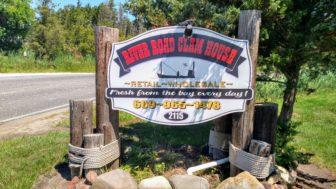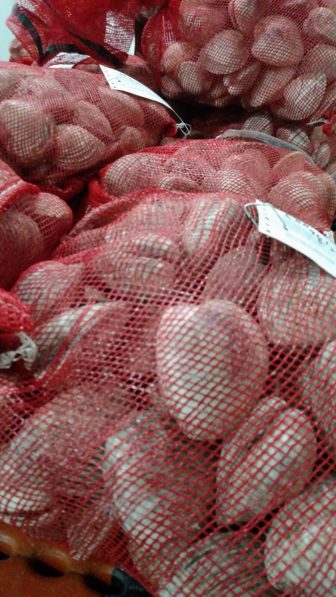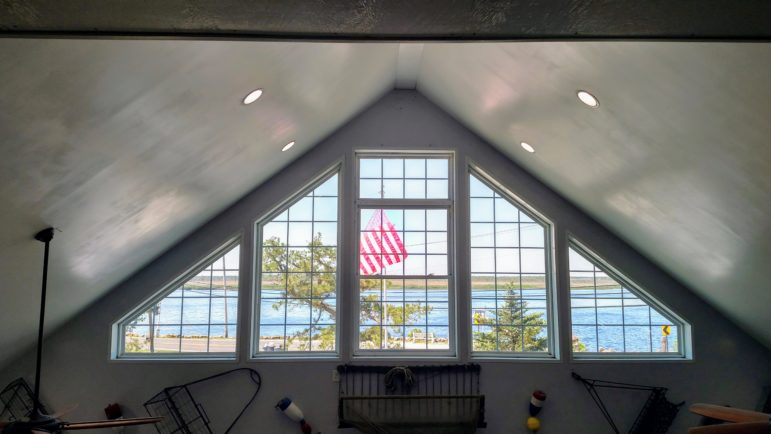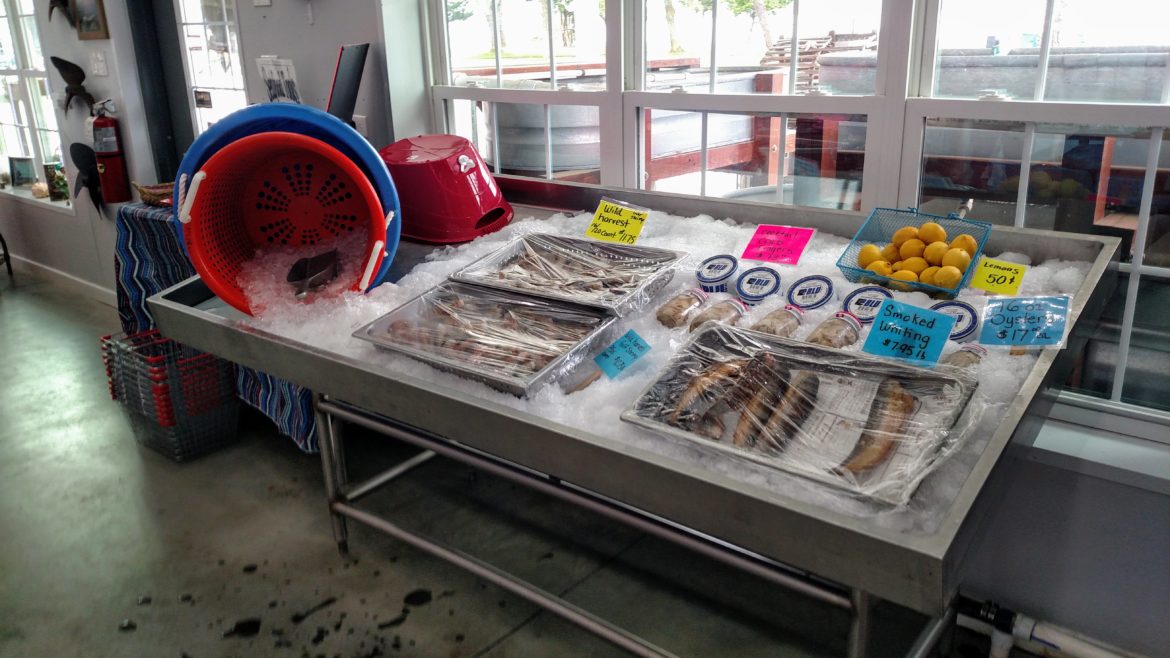On a bend in the Mullica River, about nine miles from its terminus in Great Bay, the River Road Clam House serves as a hub in the small town of Lower Bank. A string of homes flank the clam house on either side. Further down the road, fiberglass pool manufacturer Dolphin Industries and the boatyard of Jersey Cape Yachts, Inc. stand facing the bridge leading to Egg Harbor City, about 15 minutes to the southwest. Roughly equidistant is Tuckerton in the opposite direction. Apart from that, there’s not much beside the stretch of blue on the far horizon separating the southernmost tip of Long Beach Island from Brigantine’s marshlands and the stands of cedar, pine and reeds that stretch for miles around, shielding the clam house and its town from these neighboring communities. At night, the lights of Atlantic City’s casinos can be seen in the distance.
 The clam house thrives by continuing a maritime tradition long associated with southern New Jersey. Buying from local baymen, the family-run business is one of the few shops that still sells seafood fresh and directly from a nearby source (you might be surprised to learn how often even locally-caught scallops are treated with chemicals before they are sold commercially). A seemingly constant growth in popularity launched the business from an outbuilding in disrepair to a renovated institution selling to international corporations, restaurants and locals alike.
The clam house thrives by continuing a maritime tradition long associated with southern New Jersey. Buying from local baymen, the family-run business is one of the few shops that still sells seafood fresh and directly from a nearby source (you might be surprised to learn how often even locally-caught scallops are treated with chemicals before they are sold commercially). A seemingly constant growth in popularity launched the business from an outbuilding in disrepair to a renovated institution selling to international corporations, restaurants and locals alike.
Clamming has served as a viable source of income in South Jersey since time immemorial, although the work becomes harder and harder with each passing year. Waters once teeming with shellfish are now depleted, having fallen prey to pollution, bacteria and other ills caused or exacerbated by human activity. A way of life for many has become an economically sound career for a relative few. While fulltime baymen still exist, many who clam do so on a part-time basis. Michelle Lubaczewski, who owns and operates the clam house with husband Gary, says the couple often buys from “summertime clammers making extra money. Some young kids, some older people. School teachers, bus drivers.”
“There’s not many clammers left,” Michelle says. “Used to be you could catch a lot of clams in a short amount of time – it’s harder and harder to catch clams now.”
The water yields less than it once did, but the baymen and the businesses who buy their catch from the docks and wharves of South Jersey have managed to keep their trade alive in an era marked by environmental catastrophe and a globalized food industry.
“We strictly deal with local clammers,” Michelle says. Gary himself clammed for most of his life, taking up the trade as a young man. “That’s when I first threw a rake in the bay,” he says.
“He didn’t stay clamming all those years,” Michelle says. “He was a truck driver for a little while after that, but he always returned to the water.”
 Gary and Michelle devoted themselves fully to the water 17 years ago, when they purchased the River Road property in 2000. The land was owned by Adele Cavileer, the widow of Horace, who opened a clam house on the site in 1946. Then called the Cavileer Clam House, the business was first housed in a shed built on the lawn of the couple’s residence. When trade picked up, Horace converted a portion of his home into a storefront.
Gary and Michelle devoted themselves fully to the water 17 years ago, when they purchased the River Road property in 2000. The land was owned by Adele Cavileer, the widow of Horace, who opened a clam house on the site in 1946. Then called the Cavileer Clam House, the business was first housed in a shed built on the lawn of the couple’s residence. When trade picked up, Horace converted a portion of his home into a storefront.
“Our garage still has concrete-lined walls and a drain in the floor from when he had it as a clam house,” Michelle says.
The Lubaczewskis had sold clams to the Cavileer Clam House in the past, and were friendly with its owners. When Adele placed the property on the market, Gary and Michelle paid Lower Bank a visit. Adele agreed to sell, but there was a catch: it was impossible to subdivide the land. The Lubaczewskis would have to sell their own home in Sweetwater and move into the old Cavileer place, set mere yards away from the clam house itself. Gary and Michelle faltered. Uprooting themselves from Sweetwater had not factored in their vision. Still, they decided to press on and purchase the former Cavileer Clam House.
In 2009, the Lubaczewskis made an addition of their own to the business, building a pole barn structure around the concrete shack constructed by Horace Cavileer.
In October 2012, Hurricane Sandy hit Lower Bank, taking away nearly all Gary and Michele had made: The storm tore at their home and the Mullica swelled over its banks, flooding the property. When the river receded, the Lubaczewskis feared their livelihood would be swept away with the floodwater. “It was scary,” says Gary, “We didn’t stay. We nearly left here swimming.”
Despite the extensive damage, the Lubaczewskis held on tightly, reeling their business back from the edge with help from neighbors. “We had three feet of water in the clam house,” Michelle says, “All the exterior walls came off so we could pull out the wet insulation. We did lose a lot of equipment, and did a lot of repairs.”
According to Gary, all repairs made in the aftermath of Sandy were paid out-of-pocket with no aid from the government, due to the clam house’s location in Burlington County. “Atlantic (County) is right there, and Ocean (County) is right on the other side of the Wading River Bridge, but we were not affected by the hurricane,” he snorts.
“We were not in one of the zones they [the Federal Emergency Management Agency] considered affected by the storm,” Michelle says.
“All the FEMA people were out here going ‘yeah, yeah, yeah.’ But when push came to shove we ‘weren’t affected’ by the hurricane,” Gary says.
The clam house did not resume operations until January 2013. It had no choice: loss of equipment made business impossible and the government closed the bay in Sandy’s wake. It’s illegal to clam in the aftermath of a massive storm, Michele explains. “When there is a flood or a hurricane, when the water comes on the ground, everything that’s on the ground goes back into the bay and it’s actually contaminated for a while.”
 Today, little evidence of the hurricane remains. The parking lot of broken shells gleams white in the morning sun, and a tractor-trailer rumbles by, the logo of a major seafood distributor painted on its side. More customers come. Yogi, the couple’s massive golden retriever, lumbers toward the newcomers’ car, eager to make new friends. Gary calls Yogi back, but the family laughs at the friendly dog sniffing about their feet. Attempting to climb into their car, Yogi distracts them a while longer before returning to the cool concrete floor of the veranda.
Today, little evidence of the hurricane remains. The parking lot of broken shells gleams white in the morning sun, and a tractor-trailer rumbles by, the logo of a major seafood distributor painted on its side. More customers come. Yogi, the couple’s massive golden retriever, lumbers toward the newcomers’ car, eager to make new friends. Gary calls Yogi back, but the family laughs at the friendly dog sniffing about their feet. Attempting to climb into their car, Yogi distracts them a while longer before returning to the cool concrete floor of the veranda.
The family enters the clam house, the door swinging shut behind them. It’s impossible to overhear their order, though Michele says dayboat scallops and oysters are in vogue. “Oysters are probably the next major thing,” Gary says. “We’re one of the few people allowed to dredge small oysters out of the Mullica.”
Michele said they don’t get enough oysters now, but they’re working on that.
New Jersey Department of Environmental Protection biologist Jeff Normant said less than 10 baymen currently lease oyster beds on the Mullica. He explained the process: young oysters are culled from the river’s shallow waters and moved to the Great Bay. Once placed in the saltwater, Normant says, “they’ll get nice and fat” with a little luck.
According to Normant, Great Bay is the last oyster estuary on the Atlantic-New Jersey coast.
From the veranda, one can see homemade oyster cages arranged before the Lubaczewskis’ garage door. Across the road, Gary’s boat nods in coffee-colored water, awaiting the installation of an oyster dredge.

Pingback: Captain Carl Wants a Parking Lot – Monday’s Roundup | Route 40